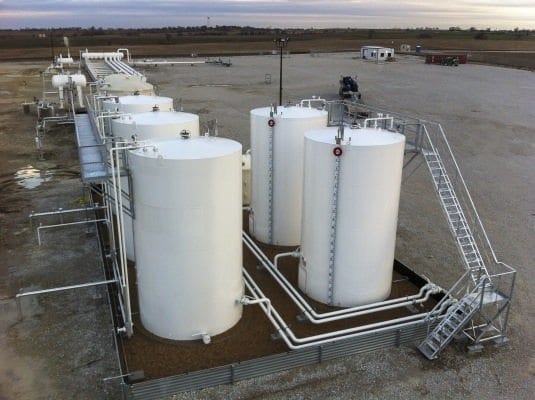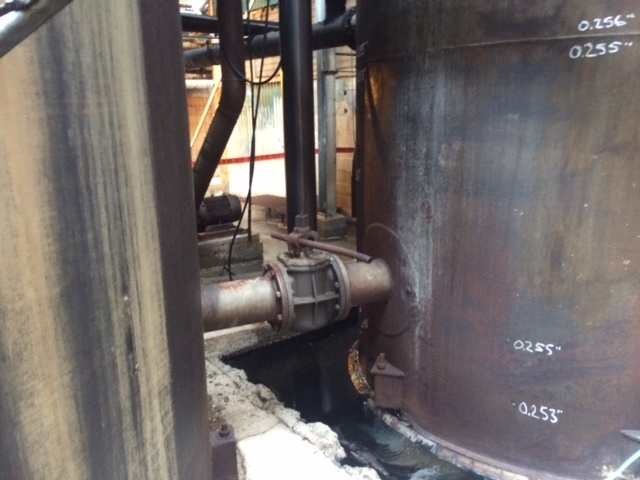Understanding the Value of Welding Assessment in Quality Control Processes
Welding evaluation is an essential element of quality control in construction and production. It assures that welds adhere to established criteria, which is critical for architectural stability. Different evaluation strategies, from aesthetic to ultrasonic screening, assistance identify flaws early. This proactive approach not just stops pricey repair work however additionally boosts security. Comprehending the nuances of welding examination can reveal its wider implications for sector compliance and reputation. API 650 Welding Inspection. What exists below the surface area of these techniques?
The Function of Welding Examination in High Quality Assurance
While welding is a critical procedure in various markets, its quality and honesty hinge substantially on effective examination methods. Welding inspection functions as a safeguard, making sure that welds fulfill well-known criteria and specs. This procedure not just identifies flaws yet also analyzes the general handiwork, thereby adding to the safety and security and durability of bonded frameworks. Inspections are essential to high quality guarantee, as they aid avoid costly failings and maintain conformity with industry regulations. By employing knowledgeable inspectors, organizations can enhance their operational effectiveness and copyright their track records. Furthermore, the understandings acquired from assessments can educate continual improvement, leading to much better methods and training for welders. Inevitably, welding inspection functions as a critical web link in the quality control chain, ensuring that every joint is dependable and capable of standing up to the roughness of its desired application. This diligence is vital for the integrity of infrastructure and the safety and security of end customers.
Kinds Of Welding Inspections
Welding examinations incorporate a range of approaches created to evaluate the top quality and integrity of welds. These assessments are vital in making certain conformity with industry criteria and specifications. Typical kinds of welding inspections consist of visual evaluation, which allows for prompt identification of surface area irregularities; ultrasonic screening, which utilizes high-frequency sound waves to identify internal imperfections; and radiographic testing, using X-rays or gamma rays to expose weld stability below the surface area (API 650 Welding Inspection). Furthermore, magnetic fragment screening is used to identify surface and near-surface discontinuities in ferromagnetic products, while dye penetrant screening uses a method for exposing surface-breaking flaws. Each kind of examination serves a specific objective, adding to the total high quality assurance procedure. By employing a mix of these techniques, inspectors can give a thorough analysis of welding top quality, eventually ensuring the security and integrity of welded structures
Common Issues Found in Welding
A selection of usual flaws can occur during the welding process, influencing the integrity and efficiency of bonded frameworks. These problems include porosity, which includes caught gas pockets within the weld, damaging its strength. Fractures might additionally form due to fast air conditioning or improper joint design, resulting in possible failure under tension. Incomplete combination takes place when there wants melting of the base metal, leading to weak bonds. One more problem, damaging, includes the elimination of base steel along the weld side, developing a significant structural weakness. Additionally, too much spatter can influence the look and demand more cleansing or repair. Imbalance can lead to unequal weld beads, compromising the overall quality. Determining these flaws early with correct inspection techniques is vital to assure the reliability and safety of bonded parts, inevitably guarding the efficiency of the whole structure.

Advantages of Routine Welding Inspections
Normal evaluations play a significant duty in preserving the high quality and safety and security of bonded structures, especially in light of the typical defects formerly outlined. These assessments provide an opportunity to recognize and correct concerns before they escalate right into major troubles, ensuring structural integrity. By spotting problems early, companies can minimize repair service expenses and prevent possible project delays.
Furthermore, normal welding inspections enhance compliance with industry requirements and laws, fostering count on amongst stakeholders. This adherence not only safeguards the company's credibility but additionally adds to improved safety and security for personnel and the general public.
Constant inspections assist in far better training and ability development for welders, as comments from inspections can guide renovations. Ultimately, the advantages of routine welding inspections extend beyond immediate top quality guarantee, promoting long-lasting functional efficiency and reliability in welded structures.
Finest Practices for Effective Welding Assessment
Executing ideal methods in welding assessment is vital for assuring the greatest criteria of high quality and safety. Initially, examiners need to be sufficiently educated and licensed, possessing a thorough understanding of welding strategies and materials. Utilizing sophisticated examination innovations, such as ultrasonic screening and radiography, enhances the detection of issues that might not show up to the naked eye. Establishing a clear assessment plan, detailing the standards and frequency of evaluations, warranties consistency and thoroughness.

Documenting all searchings for diligently is important for traceability and accountability. Normal calibration of examination devices assures precision, while maintaining a organized and clean workspace minimizes the threat of contamination. Additionally, cultivating open communication among team participants assists in the sharing go to this website of insights and click here to read promotes a culture of top quality. By sticking to these best methods, companies can notably improve their welding high quality assurance processes, ultimately resulting in safer and a lot more dependable products.

Often Asked Concerns
What Credentials Are Required for a Welding Inspector?
A welding inspector normally calls for qualification from acknowledged organizations, such as the American Welding Society (AWS) or the International Institute of Welding (IIW), together with appropriate experience and expertise in welding processes and high quality criteria.
How Often Should Welding Inspections Be Performed?
Welding evaluations ought to be done regularly, typically at numerous job phases, including prior to, during, and after welding processes - API 650 Welding Inspection. The regularity typically relies on project specifications, regulatory needs, and the intricacy of the welds involved
What Are the Costs Connected With Welding Inspections?
The costs connected with welding assessments differ commonly, typically ranging from a couple of hundred to a number of thousand bucks, depending on factors like inspection type, task size, and location, affecting total project budget plans and timelines.
Can Welding Inspections Be Conducted Remotely?
Yes, welding inspections can be carried out from another location making use of sophisticated modern technologies such as drones, cams, and ultrasonic screening. These methods allow examiners to assess weld honesty without being literally present, boosting efficiency and security continue reading this in various settings.
Exactly How Do Examination Outcomes Impact Project Timelines?
Examination results can considerably influence job timelines by identifying flaws early, resulting in essential rework or adjustments. Hold-ups may happen if inspections expose concerns needing resolution, inevitably influencing general project completion and spending plan adherence.
Welding assessments include a variety of techniques designed to examine the top quality and honesty of welds. Typical types of welding assessments consist of visual evaluation, which permits for instant recognition of surface irregularities; ultrasonic screening, which makes use of high-frequency audio waves to discover internal imperfections; and radiographic screening, using X-rays or gamma rays to expose weld integrity underneath the surface area. Constant inspections assist in far better training and skill development for welders, as comments from inspections can guide renovations. Executing finest methods in welding evaluation is crucial for assuring the highest criteria of high quality and safety. Welding inspections must be performed regularly, generally at numerous project phases, including before, during, and after welding processes.